Are you a Quiet Speculation member?
If not, now is a perfect time to join up! Our powerful tools, breaking-news analysis, and exclusive Discord channel will make sure you stay up to date and ahead of the curve.
Everyone is fixated on Grixis Shadow. And rightly so—the deck is very powerful and has been sitting at the top of every metagame chart since April. And I think this is incorrect. I have some reason to believe that Shadow is a symptom of the metagame, not the cause. The Modern PPTQ season starts at the month, and players need to be ready to confront the real power in the format, Eldrazi Tron.
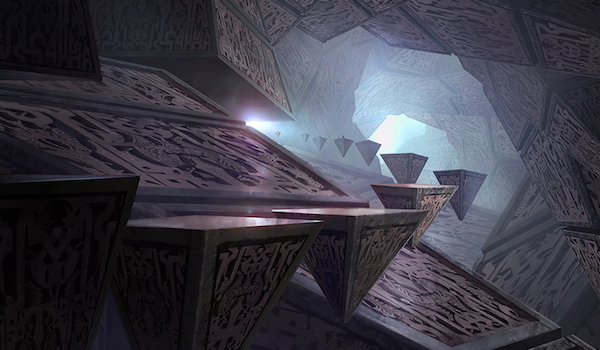
After playing many paper tournaments, sifting through extensive MTGO results, talking with other players, and some personal meditation, I've come to the conclusion that Eldrazi Tron is facilitating the current atypical metagame. It is responsible for midrange Jund's disappearance, and with that the rise of decks that Jund would normally hold in check. Death's Shadow has directly benefited and used this to ascend the metagame. This dual system is currently self-perpetuating, but I don't think it will last. The question is not if it will fall but when. Allow me to explain.
Bipolar Metagame
Go ahead, get the jokes about bipolar disorder out of your system. I'll wait.
Good now? Can we pretend to be adults now? Alright, in a bipolar metagame you have two top decks that dictate what decks see success. A recent example of this was the Standard metagame before the January bannings. GB Delirium and UW Flash sat at the top of the metagame because they complimented each other. Delirium was the best midrange deck, preying on the fast creature swarms and go-big midrange decks that beat Flash. Meanwhile Flash was strong against combo, grindy midrange, and control strategies that beat Delirium.  Consensus was that they were 50-50 against each other, but in my opinion as a Flash player Delirium was advantaged. This allowed the two decks to effectively split the metagame.
Consensus was that they were 50-50 against each other, but in my opinion as a Flash player Delirium was advantaged. This allowed the two decks to effectively split the metagame.
Compare this to unipolar where one deck dominates. Eldrazi Winter is an ur-example: you either played the top deck or your deck targeted the best deck. This is quite clearly unhealthy since a targeted deck should fall to all the hate but in a truly unipolar metagame the top deck is so much better it doesn't matter. When the top deck does fall to being targeted, then it's not unipolar at all but multipolar. There are a number of different decks that could be the top deck with no real advantage over the others. The top slot depends not on the decks themselves but the rest of the metagame. This is what we saw last summer, where the members of Tier 1 didn't change much but the positioning of the decks within the Tier did, constantly. This is generally held to be a very healthy metagame.
Whether a bipolar metagame is healthy depends on a number of factors. The problem the aforementioned Standard had was the lack of answers or counterstrategies to challenge the top decks. This is not a problem for Modern and its vast cardpool. The question instead is whether the bipolarity keeps out too many decks and harms diversity.
Where's the Jund?
I came to my realization because I wondered why Jund has so thoroughly disappeared. It has been reduced to a blip at best in metagame rankings. Even Abzan is hurting, when it normally assumes Jund's position when Jund itself falls. This is my clue to the truth of the metagame, because on paper the meta is filled with decks that Jund should feast upon. Collected Company decks and Affinity are good matchups, and both are doing very well. There are lots of fragile combo decks, brews, and control decks that lose to Liliana of the Veil. Death and Taxes won the invitational and Jund crushes DnT. With all this food around, something must be keeping Jund out.
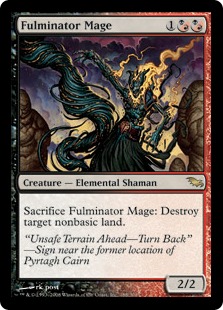 That something is Eldrazi Tron. Traditional Gx Tron was a very bad matchup but it was winnable. The Fulminator Mage into Surgical Extraction plan that emerged at the end of last year did a lot to beat Tron. However, it doesn't work against Eldrazi Tron and the matchup is naturally worse besides. Gx Tron has to hit Tron to do anything but in Eldrazi Tron it's a perk. Furthermore, removing four lands from Gx Tron is deceptively powerful. Despite being the poster child of big-mana decks, Tron is land-light. It runs 20 lands, at most, relying on all its cantrips and Sylvan Scrying to cheat the land count. Reducing that further can mean they never hit six mana even in a long game. Eldrazi doesn't cheat on lands and also has Mind Stone. Land destruction is not a good answer to spaghetti monsters.
That something is Eldrazi Tron. Traditional Gx Tron was a very bad matchup but it was winnable. The Fulminator Mage into Surgical Extraction plan that emerged at the end of last year did a lot to beat Tron. However, it doesn't work against Eldrazi Tron and the matchup is naturally worse besides. Gx Tron has to hit Tron to do anything but in Eldrazi Tron it's a perk. Furthermore, removing four lands from Gx Tron is deceptively powerful. Despite being the poster child of big-mana decks, Tron is land-light. It runs 20 lands, at most, relying on all its cantrips and Sylvan Scrying to cheat the land count. Reducing that further can mean they never hit six mana even in a long game. Eldrazi doesn't cheat on lands and also has Mind Stone. Land destruction is not a good answer to spaghetti monsters.
Furthermore, the Eldrazi are simply phenomenal against Jund regardless of the shell. Bant Eldrazi was Jund's foil until Etron took over. Jund was good because Lightning Bolt and Inquisition of Kozilek hit everything in Modern. Thought-Knot Seer and Reality Smasher broke the rules and invalidated Jund's removal. Without its removal, Jund is nothing. Etron holds this advantage, which coupled with its more stable mana allowed it to supplant the Bant version.
The Shadow Effect
This trend was reinforced by the rise of Grixis Shadow. Bolt hits exactly Snapcaster Mage and Bolting a Shadow player is a dicey strategy. Inquistion is decent, but all the delve creatures hurt. This resistance is one explanation for Grixis topping Jund Shadow. The bottom line is that with two very good decks having a natural advantage over it, there was little chance for 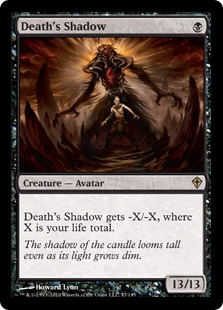 Jund to hold onto its traditional place in Tier 1. Abzan has done better but Etron is still a bad matchup. This is good for Shadow decks because Jund grinds well thanks to Terminate, Scavenging Ooze, and Kalitas, Traitor of Ghet, which gave it an edge on Shadow.
Jund to hold onto its traditional place in Tier 1. Abzan has done better but Etron is still a bad matchup. This is good for Shadow decks because Jund grinds well thanks to Terminate, Scavenging Ooze, and Kalitas, Traitor of Ghet, which gave it an edge on Shadow.
Shadow has also been scratching Etron's back. Gx Tron, in my experience, has the advantage on Etron and Shadow is very good against Gx Tron. Traditional Tron hits Tron more often and sooner than Etron, which allows it to power out its big threats more quickly. Etron's removal is also irrelevant against Tron, while Oblivion Stone is excellent against Etron. Winning the race to bomb-land is good in a matchup that's all about the bombs. Shadow has hand disruption, a quick clock, and counterspells which combine into a nightmare for Gx Tron. Etron has a more favorable matchup thanks to redundancy and Chalice of the Void. As a result Shadow has driven Tron out of Tier 1.
Ancillary Effects
The ending of GBx's reign has allowed previously suppressed decks to rise. I won't go into every deck because this article would go on forever, and instead will focus on more well known decks. Do note that GBx's fall does not pertain to Burn's or Affinity's rise—these decks benefit more from reduced attention than changes to other decks. Play too loose with your life total, Burn gets you. Fail to pack hate for Affinity, it gets you. Jund's demise is minor in comparison.
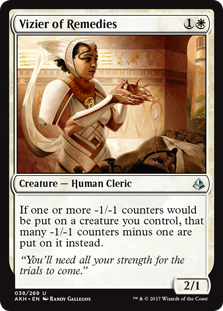 First and foremost is the rise of Counters Company. Jund preyed on Abzan's little creatures and lack of removal for Scavenging Ooze, which nearly drove the archetype to extinction. Between Jund's suppression and the new Vizier of Remedies combo, the deck is ascendant for the first time in over a year. In addition to these factors Counters is a very fast combo deck, winning turn three frequently unless disrupted. This makes it a good choice in the metagame. Etron doesn't have much interaction except for Chalice, and setting that to one accomplishes little against Company. They're also redundant enough to overcome Shadow's discard and Fatal Push. Eternal Witness and Collected Company are a huge beating in attrition matchups.
First and foremost is the rise of Counters Company. Jund preyed on Abzan's little creatures and lack of removal for Scavenging Ooze, which nearly drove the archetype to extinction. Between Jund's suppression and the new Vizier of Remedies combo, the deck is ascendant for the first time in over a year. In addition to these factors Counters is a very fast combo deck, winning turn three frequently unless disrupted. This makes it a good choice in the metagame. Etron doesn't have much interaction except for Chalice, and setting that to one accomplishes little against Company. They're also redundant enough to overcome Shadow's discard and Fatal Push. Eternal Witness and Collected Company are a huge beating in attrition matchups.
UW Control has also benefited from Etron and Shadow. UW has the advantage against both decks, though it's less than you'd think. Discard and Chalice in quantity are beatings. The story of UW's return to the upper tiers is Gx Tron's demise. Beating control decks with planeswalkers was Tron's thing and it was good at that thing. Spreading Seas and the banning of Eye of Ugin helped but it was still bad. Instead of being ~30% to win, UW is more like ~40%. However, Etron is all creatures, which UW beats up on. Again, without the predator, the prey rises. Jund's disappearance also helped. The matchup was 50-50; hard to win but easy to lose. With a hard matchup gone, the deck sees more good matchups and it rises in the rankings.
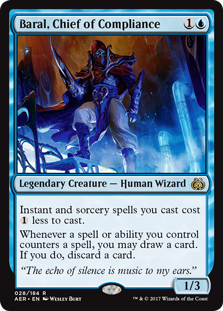 I said above that Jund preyed on fragile combo decks and brews. It would follow that decks like that would rise now. This is not happening. As I'm finding out in my banlist testing with Storm, Grixis Shadow and Etron are both good at taking Jund's place against the fringe. Chalice is crippling for combo decks, as is disruption and a clock. Even Ad Nauseam, long the most reliable and potent combo deck, is falling off. Not a great time to be a polite euphemism.
I said above that Jund preyed on fragile combo decks and brews. It would follow that decks like that would rise now. This is not happening. As I'm finding out in my banlist testing with Storm, Grixis Shadow and Etron are both good at taking Jund's place against the fringe. Chalice is crippling for combo decks, as is disruption and a clock. Even Ad Nauseam, long the most reliable and potent combo deck, is falling off. Not a great time to be a polite euphemism.
Finally, we have DnT. I have been working on this deck for a long time and it is finally good. Not because the deck itself is good (The only substantial change in over a year is the addition of Thraben Inspector) but because of Shadow and Etron. Yes, the deck has very good matchups against both, but the big change was Jund's death. I spent a lot of time trying to make the Jund matchup acceptable and eventually gave up. Jund was built to take apart small creature decks and that's DnT in a nutshell. With the apex predator gone and prey abundant, the midlevel predator moves into apex territory.
Is This a Problem?
I don't think this bipolarity of Shadow and Etron will last, and so it won't be a problem. The answer decks are already seeing play and loosening the top dog's hold on Modern. Things will not return to the way they were before Death's Shadow became a thing, but we will see the old dynamism return and the healthy multipolar meta reemerge.
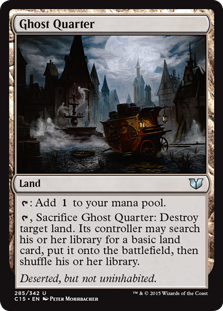 The bipolar meta was bad for Standard because it could not be broken. There was no going over Emrakul, the Promised End, wide against Ishkanah, Grafwidow, under Reflector Mage, or long against Smuggler's Copter. Those were the best cards in that Standard and the two top decks made the best use of those cards. Answers or counterstrategies simply didn't exist in the cardpool thanks to Wizards' design decisions. There's only so much you can do in Standard and unexpected problems won't have answers.
The bipolar meta was bad for Standard because it could not be broken. There was no going over Emrakul, the Promised End, wide against Ishkanah, Grafwidow, under Reflector Mage, or long against Smuggler's Copter. Those were the best cards in that Standard and the two top decks made the best use of those cards. Answers or counterstrategies simply didn't exist in the cardpool thanks to Wizards' design decisions. There's only so much you can do in Standard and unexpected problems won't have answers.
That problem does not exist in Modern. The format's vast cardpool ensures that for any problem a solution exists. It may not be obvious, but it does exist. It is only when a deck is obscenely broken (Eldrazi Winter) that the process of discovery and adaptation fails. This process is going on right now and ensures that the bipolarity will not hold. Exactly what the new meta will look like is unclear yet, but I suspect some Lightning Bolt deck will rise to feast on the Company decks and DnT.
End of an Era
The other thing that will contribute is the change in MTGO results reporting. If you didn't know, Wizards is reducing the number of 5-0 decklists they report each day from ten to five. They will also all be different decks since each deck has to be at least ten cards different from the others. Their stated goal is to foster creativity and innovation (it's the last line of the third paragraph). The unstated goal is to further reduce data mining in Magic, making it harder to solve formats and trying to prevent the diversity problems that plagued Standard.
 As someone who does a lot of stats analysis (heck, that's what this site was founded on) this change seems harmful. Less data means less data to analyze, which means a smaller sample size, which means a worse modeling of reality, etc., etc., Statisticians Lament. But then that's the whole point. Wizards has been concerned about data mining being used to solve formats too quickly and thereby "ruining" them. It's why back in 2015 they asked MTGGoldfish to stop using bots to "watch" replays to gather more data than Wizards published. As far as Wizards is concerned, less data published means less opportunity to solve Standard, meaning Standard stays interesting longer
As someone who does a lot of stats analysis (heck, that's what this site was founded on) this change seems harmful. Less data means less data to analyze, which means a smaller sample size, which means a worse modeling of reality, etc., etc., Statisticians Lament. But then that's the whole point. Wizards has been concerned about data mining being used to solve formats too quickly and thereby "ruining" them. It's why back in 2015 they asked MTGGoldfish to stop using bots to "watch" replays to gather more data than Wizards published. As far as Wizards is concerned, less data published means less opportunity to solve Standard, meaning Standard stays interesting longer
I get their reasoning, even if I don't agree with the decision. A lot of the problems that this change is trying to solve come from how Wizards has designed sets over the past several years. On the other hand, with so many eyes looking at sets and tinkering with Standard these days, it is far more likely that everything will be found in even the most complicated set. Makes our job harder, but it will make Standard look unsolved and open longer. Thus, for now, the impact is ambiguous.
What is not ambiguous is how it will affect perceptions of the metagame. The direct impact will be MTGO losing value as a data source. This will give more weight to paper results, which tend to be more diverse than MTGO. This will make it harder to identify which deck is actually "the best," and fewer players will choose to play that deck. While data analysis and data mining are very useful tools to identify trends and explain the world, they can also become self-fulfilling prophecies. It's complicated, but in short identifying what the statistically "best thing" is will draw attention to it. With increased attention comes more utilization, which in turn biases the data toward the thing. Thus with lessened MTGO data, players will be less likely to see the current "best deck," and those who always try to play the "best deck" will be less likely to identify it correctly. This will also help break up bipolar metagames due to increased chaos in the deck selection process.
In summation, the metagame may have shifted into a less diverse state, but not a stable state. Between Modern's natural tendency to self-correct over time and Wizards new policy, the instability will increase. This will break the top decks' hold on the format and soon the old dynamism will return. Did I miss something or confuse you? I'll be in the comments.





In my experience and that of several other UW players I know, Gx tron is actually a significantly easier matchup than Etron. Recent UW lists are very good at disabling Tron through four spreading seas and four ghost quarter/tectonic edge, and unlike Etron traditional Tron cannot really function without its namesake.
My experience is that what you say is true, but it is a fragile thing since UW doesn’t play many counterspells. If we don’t get a clock going Tron will still crush us eventually. Etron can be run out of threats and then brick off more easily which is better for our control clock.
“That something is Eldrazi Tron. Traditional Gx Tron was a very bad matchup but it was winnable. The Fulminator Mage into Surgical Extraction plan that emerged at the end of last year did a lot to beat Tron. However, it doesn’t work against Eldrazi Tron and the matchup is naturally worse besides.”
What utter nonsense. Gx Tron was unwinnable, ETron is tough but absolutely winnable if played properly and with a bit of luck.
Had to stop reading here.
It was far from the case that Gx Tron was unwinnable and many very good Jund players did so regularly. It was a stressful matchup and even Reid Duke and Brad Nelson hated the matchup, but they had a plausible plan that allowed them to pull through. Gx Tron could never drive out Jund, but the Eldrazi are much better against Jund, and the deck is so popular that it finally killed Jund.
I definitely disagree. I’ve never heard a Jund player say they had a favorable matchup against Tron. Just to have an even matchup with the Fulminator and Surgical plan you mentioned would probably require 7+ sideboard slots, which is very unrealistic. Eldrazi Tron meanwhile has threats that Jund can actually answer and is very prone to flooding out, which fits into the attrition plan. I can see how the way Eldrazi Tron affects the metagame could drive out Jund, but saying that it is a harder matchup than Gx Tron is just not true. Hasn’t Jund vs. Tron always been known as one of the most polarized matchups in Modern? The real issue is probably that Eldrazi Tron, though a better matchup for Jund than normal Tron, is still a hard matchup for Jund and occupies a much larger metagame percentage than traditional Tron typically did.
Overall, interesting article! Always glad to see some data analysis
David didn’t say Jund ever had a favorable matchup. He simply said very good Jund players were able to win. That is a fact. There are clips out there of Jund players beating Tron.
And yeah, Karol’s comment reads like a salty Jund player who still wants BBE.
He said the won “regularly.” Which implies a good to even matchup.
SOU, no it doesn’t imply that. You inferred it. Big difference.
I actually agree with SOU Organization and Karol in that I think Eldrazi Tron is an easier deck for Midrange Jund to beat than GR Tron. That seems to be the general consensus on the Jund primers I’ve come across online too. GR Tron was a beating, everything it played was tailor made to beat Jund – O Stone, All is Dust, Relic, Wurmcoil, Karn, Ugin and Emrakul/Ulamog all function as must answer cards for Jund that are almost always 2+ for 1s against the deck.
Don’t get me wrong, Eldra Tron is a rough deck for Jund Midrange to face, however, due to Relic largely being a SB card for them, a single Goyf can usually win in combat against all of their threats. They run the same number of Ugin and All is Dust but no O Stones. Additionally, Karn is run only as a 2 of rather than a 4 of. They don’t run Wurmcoil maindeck (and only usually 0-2 copies in the SB). Ulamog/ Emrakul aren’t largely played in the deck either. All these factors make Eldra Tron (although still a bad MU) easier than straight GR Tron.
I do agree with your general conclusion that the dominance of Grixis Shadow is merely a side effect of big mana decks though. It’s a great article overall, I just disagree with the section on Jund having a worse game against Eldrazi Tron than Gr Tron. Jund has been suffering for quite some time now, there have been just so many challenging or sideboard dependent decks increasing in numbers in the various metagames (Tron, Dredge, Titanshift, Eldra Tron, Living End, Bant Eldrazi, Affinity and Burn). Deaths Shadow decks have a much better game verses many of these MUs due to being able to race them faster than Midrange Jund can.
I can’t take anybody seriously who says they have to stop reading an article based off a single sentence in that article.
Modern seems awesome now, if incredibly different than it was a year ago. Maybe that’s part of why there are still some people voicing negative opinions: many top decks have been pushed out in favor of brand new ones. Hell I’m just mad I sold grixis delver to cover moving costs just in time to see 48 of those cards become the new best deck.
WOTC’s data decision…I don’t like it. The claim about formats being solved too quickly won’t really change because there will still be pro teams doing tons of playtesting. The highest tier of players will have the time and resources to simply keep the results of hours upon hours of testing to themselves. The people hurt most by this are people like myself who simply don’t have the money to buy tons of cards in order to experiment and find out that some of their deck ideas don’t pan out. Grinders and aspiring grinders who want to break into higher-caliber tournaments lose the information pros will always have. And I have an issue with creating that barrier to entry, even if that means one less youtube video complaining about netdeckers.
Your first paragraph is almost certainly correct. Such is the nature of the internet.
I sympathize, I’m in the same boat, but I actually think Pros are worse off than the common player. Without this data to check expectations and results it is much easier for the superteams to get their testing wrong. The best example I know of is from Pro Tour Philadelphia 2005. Kai Budde had a German superteam (for the time) around him to tackle the Champion/Betrayers of Kamigawa Block Constructed format. They came up with BW Journeyer’s Kite, a deck that crushed their expected metagame filled with Gx ramp decks. What they missed because at the time the data was not available was their vulnerability to White Weenie and how much better Gifts Ungiven was against Gx ramp. Since then the Star City Tour and MTGO data have prevented Pros from making those kind of bad reads. Because everyone is working from the same data set everyone is drawing similar conclusions and while each team isn’t inbred, I’d argue that the Pro Tour decks have become samey and uninspired. There’s less chance of wildly different rogue decks appearing now than before. As a result I think the pros will be forced to approach new metas the same way we mere mortals do, which will hurt the data crunchy superteams more than the rest of us.
Dear Mr. Ernenwein,
While perhaps this an odd opinion, is it perhaps the time for mono white prison? What I have felt has kept it down is the normal tron matchup, (that is, I have never won a match ever against regular tron.) However, since that has been driven out by eldrazi tron, a deck that is far easier to beat, and in fact a favorable matchup, perhaps mono white enchantment prison might do something. Also, the combo of solemnity and unlife seem to be pretty good.
Also, I think the other thing that has kept it down is, because it has historically been a bad deck, and has only been played by amateurs constructing decks with mediocre of bad choices, and that it can be very unfun to play, no pro is ever going to seriously try it.
Thank you,
Sincerely,
Nicholas Decker
Hello Nicholas,
You’d be surprised what pros are willing to play, personally I’ve seen LSV with terrible decks at both GPs and Pro Tours. That said, from what I’ve seen the real problem with Enduring Ideal style decks aren’t their matchups but the deck’s fragility and speed. It is very slow both to set up its prison and to win, which allow many decks to slip through. Solemnity and Unlife is a lock but they’re also both three mana enchantments, in a Modern where 9/9’s for B see play. If you can fix the speed problem then I can see the deck improving. Worth noting that Lantern is a faster prison deck and it sees very little play.
While the logic underlying dropping/diversifying the 5-0 decklists, a sample of winning decks that is less representative of the field will impede players who want to attack top decks with their brews. There are forums and mountains of mtg content being produced, so news about best decks will percolate through the community no matter what.
From playing competitive in the late-90s, when the game was less professionalized, I remember too well how I’d absolutely dominate 1.x(aka: extended) tournaments with what I knew to be the best decks in the format to the point of running undefeated for months at local events. While those days were a blast for me, they’re a huge bummer for anyone ignorant of the new tech. More importantly though, the shift in policy suggests an attempt to return to those days by the R&D team, which is impossible because the game exists in a different context than it did two decades ago.
Intuition tells me that the changes will mostly effect people who want to know what matches they need to hedge against without grinding endless matches.
Eldratron and shadowgrixis going 50/50 might not be the only “couple” in the current meta.
Half a year ago I wrote a small article called “on the road from titanbloom to grixis”
I spent a lot of time reading the data of the following link
https://quietspeculation.com/matchups-and-win-rates-top-tier-decks-part-1/
Regardless if you did read it or not, the writer of the article covers 7 decks.
6 of these decks have one or two 50% matchups.
Amazingly you could line them up into a road:
bloom-affinity-burn-twin-jund-grixis
So affinity and bloom worked in “symbiosis”, affinity, burn, twin and jund even had two partners.
If you line out every matchups and count the number of “partners”, “losses against” and “beats” The norm is that a deck has 2 partners, loses against two decktypes and is able to defeat two decktypes. Theres probably some math underlying this…
Now at that time “the road” was under attack by the abzan decktype which threatened to tear up the road.
I’ll bet that if you comb through lots of data you will find a similar “highway” which forms the current meta.
It’s not E-Tron alone that’s suppressing GBx, it’s the entire “big-mana” archetype, and how much it has grown over the past year and a half. Back in Jund’s heyday, the only big mana deck was GR Tron, which was generally about 5% of the meta. Right now, you have E-Tron, Titanshift, Gx Tron, RG Breach, Bant Eldrazi, and Dredge (which although not being a big-mana deck itself, it does affect the meta in an almost identical way as them). These make up almost a quarter of Modern right now. That’s just not an environment where GBx Midrange can compete.
Hi David, Any chance you could expand on the first paragraph of ‘The Shadow Effect’ please?
There is a little confusion on mtgsalvation regards whether you are referring to traditional Jund being bettered by two decks or not.
Thanks, really liked the article agrees with a lot of what I’ve been thinking about the format of late.